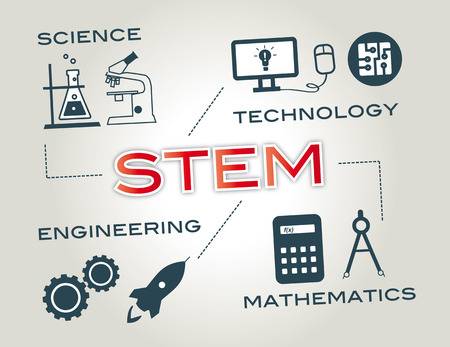5 Benefits of Beginning STEM Education at a Young Age
STEM involves the subjects of science, technology, engineering, and mathematics. Instead of teaching these topics individually, STEM education allows students to see how these individual fields work together through hands-on learning and real-world experiences. STEM education focuses on the realistic application of these subjects instead of relying on hypothetical problems. Why is this so important?
In its 2017 report, the U.S. Department of Commerce estimates that STEM occupations will grow at a rate of 8.9 percent until 2024, which is in line with prior research. However, there are many other benefits of STEM education. The following are five benefits of implementing STEM education programs at a young age.
Contents
1. Fosters Creativity and Innovation
Most people don’t associate science, coding, or math with creative thinking. STEM education, however, encourages students to find creative solutions to problems through innovative learning techniques. Traditional teaching methods primarily use textbook material, lectures, exams, and occasional experiments, depending on the course.
Rather than using traditional methods, STEM education keeps students engaged through hands-on, experimental learning. These techniques allow students to think of creative methods of solving problems. Not only does STEM foster creativity, but this creativity also leads to more innovation. The younger students become familiar with these things, the better position they are in when they take more difficult courses and pursue jobs or careers after their primary education.
2. Allows Students to Experiment with Technology
Today, children are exposed to technology at a very young age. Even before they begin school, young children are using tablets, toy laptops, and computer games. In addition to using these devices, STEM education introduces advanced technology. For example, elementary school students can learn coding through computer games on tablets, laptops, or other devices. Likewise, middle or high school students can experiment with robotics using sophisticated machinery. The use of technology in STEM education lets students gain experiences using different innovations.
Students can also learn about the importance of technological innovations. This doesn’t only include everyday devices like smartphones and tablets but also the technology used in factories, construction sites, and hospitals. Through STEM education, students will gain real-world, hands-on experience with technology, which will prepare them to adapt to new technologies throughout their lives.
3. Develops Important Lifelong Skills
STEM education helps young learners begin to develop lifelong skills that will help them throughout their lives. Of course, students will learn about topics related to the subject fields, including things like coding, computer science, biology, and physics. Young children will eventually grow up to replace individuals who are currently in these career fields, and without STEM education, we wouldn’t have people to develop treatments for diseases, advance AI, expand business and economy ventures, and so much more.
However, in addition to career-specific skills, young students who end up in different career fields will still gain valuable skills that apply to their jobs. Among these skills are problem-solving, teamwork, curiosity, critical thinking, and leadership, all of which are valuable within any job and career.
4. Prepares Students for Higher Level Courses
Introducing STEM subjects at a young age helps students feel more confident regarding these subjects when learning these topics later in life. The processes or concepts used in STEM courses, lessons, or problems will be easier to apply for students who have been using them for a while.
Since STEM-related jobs continue to grow, starting STEM programs in elementary school will help jump-start the success of these students if they choose to pursue these courses of study. Introducing subjects at a young age can help nurture students’ curiosity and interest in these fields. Students will be more likely to be interested in or open to choosing high school electives in STEM subjects if they have been exposed to topics rather than feeling intimidated.
5. Introduces A Variety of Different Subjects
STEM education opens the door to an array of subjects, fields, and industries, and without well-developed programs, students may not learn about these subjects until adulthood. There are many different subsets of STEM. For example, the engineering field is made up of dozens of different types, including mechanical, chemical, civil, and aerospace. This also goes for biology, technology, and various other scientific fields. Being exposed to the different types of STEM can open up many opportunities for students who otherwise wouldn’t know about the vast amount of options.
The younger schools incorporate STEM education in elementary curriculum, then the more young students will be interested in different careers in these fields and set up for success for their futures. Throughout high school, they can continue gaining hands-on learning experiences, which will help them decide their steps after graduation. With STEM approach, there’s also huge initiative going on, establishing equity between genders and races, making stem accessible to all groups of people.




